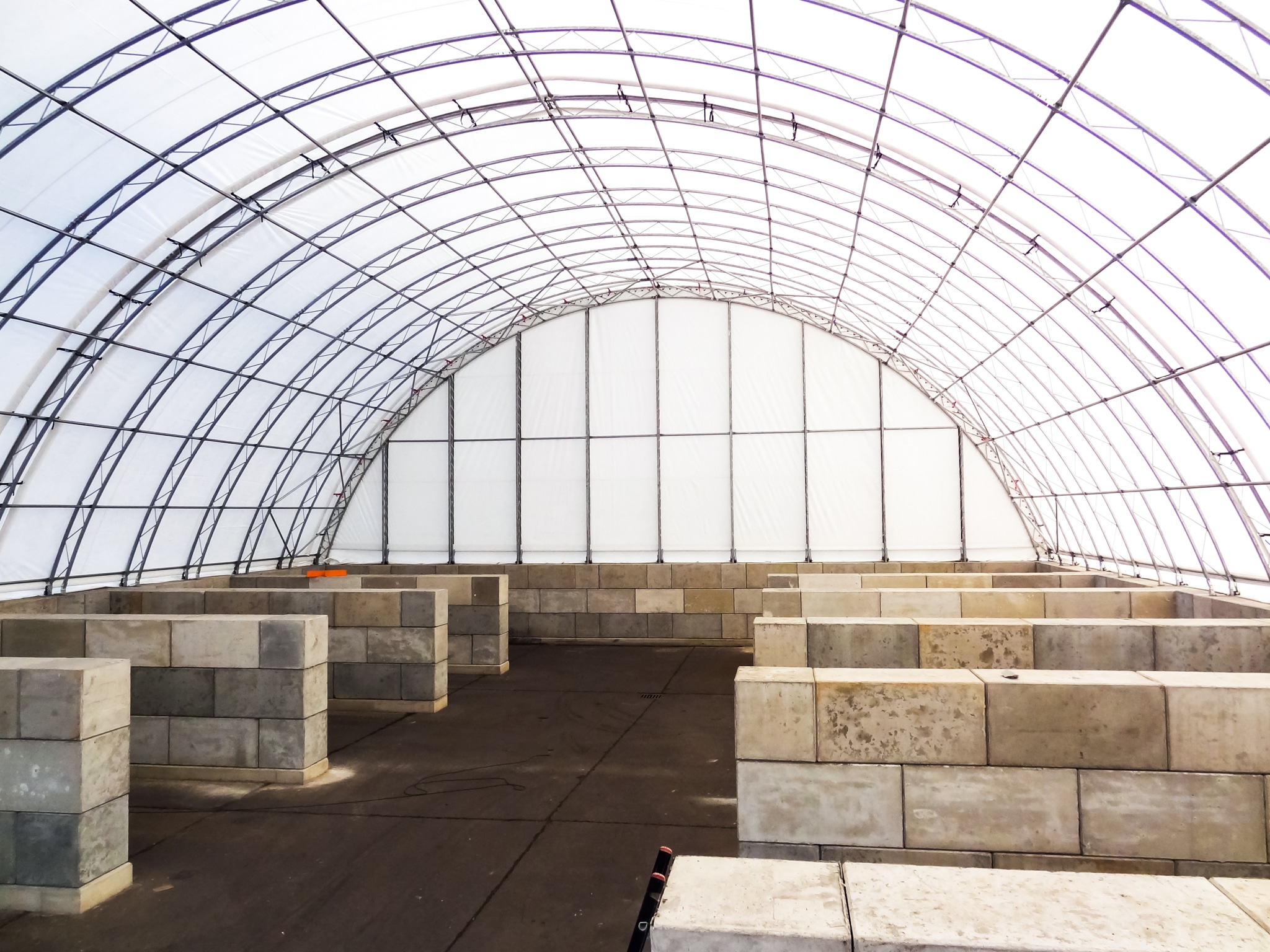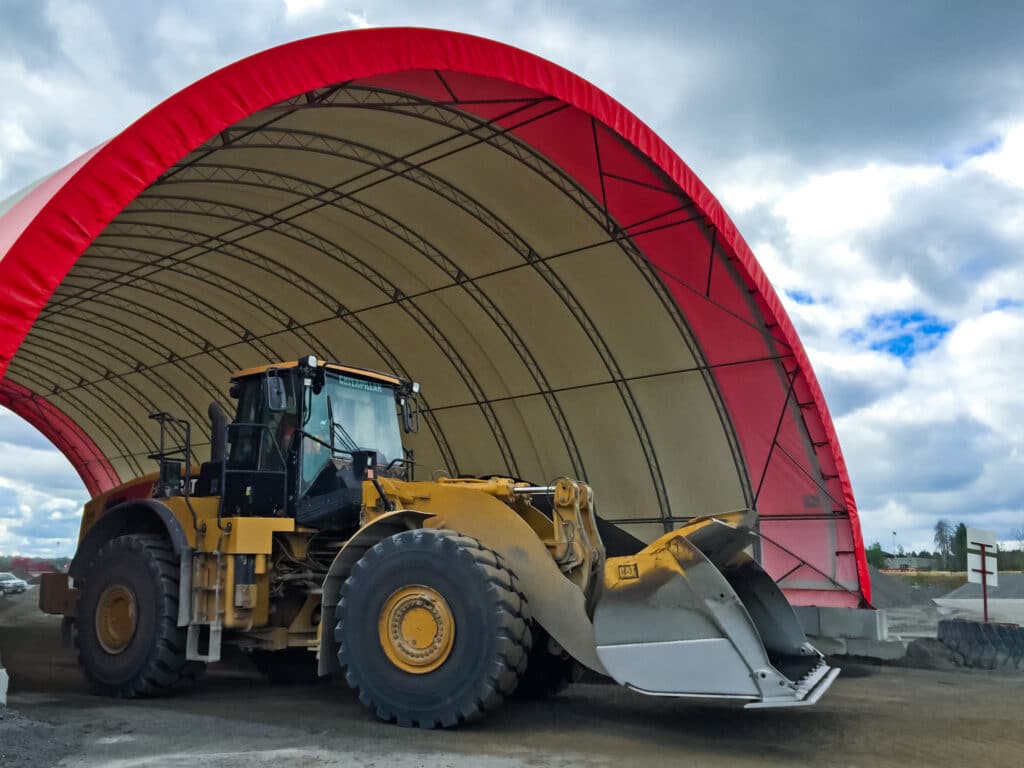Brick and mortar might be the go-to image that pops up when mentioning building structures – but the rich history of fabric buildings proves that this unique type of structure might reign supreme. The first animal skins draped over sticks and trees – teepee tents – and the modern Skyler Structure fabric buildings are all part of the timeline of tension fabric buildings. How has this structure type evolved throughout time? We can take a deeper look at the elements of the structure and how it evolved into modern-day prefabricated components and high-performance stretch fabric.
The Origins Of Fabric Structures
We can attribute the first uses of fabric in shelters to the Siberians, during the Ice Age. Nearly 44 000 years ago, ingenious people used the materials they had at their disposal to create protection from the elements. They draped animal skins over sticks to create a primary fabric building. These simple structures eventually evolved into more diverse uses like tents. Nomadic nations like the Tibetans, Mongolians, and Native Americans have all used tents in their nomadic lifestyles. Each nation has crafted the structure to suit their needs and added cultural elements to their tents.
These structures were easy to dismantle and assemble as the nomads moved around for food, shelter, and space for their livestock. These elements still apply to modern designs – the idea that fabric buildings have an aspect of moveability. Skyler Structures for example, are experts in erecting fabric buildings for temporary solutions or permanent structures.
The Functionality Of Fabric Buildings
During the early stages of nomadic use, the fabric structure provided primary shelter, privacy, and division. The structures were small and only protected what was most important. Each nomadic nation adapted its designs to its environment and especially to climatic needs. Differing shapes like the teepee from Native Americans and the Black Tent from the Bedouins exemplify how different societies have adapted a similar idea to their needs and environment. The teepee (also called tipi) was cone-shaped to protect the structure from the winds on the plains, whereas the black tent was designed with goat or camel hair to absorb rain.
Fabric structures thrived in areas where other materials were scarce and became a status symbol during the 12th century. The elaborate designs and accessories on tented structures showed wealth – and it was an opportunity for wealthy families to display their status during social events.
Fabric buildings, therefore, evolved from a necessity to frivolity. As humanity developed and societies progressed, the fabric building also changed into a structure that was more for show and not functionality. However, the stance of fabric buildings solidified when new materials were developed and allowed manufacturers, architects, and consumers to see the gaps this structure could fill. Modern uses of tension fabric structures can be seen in agriculture, garages, workspaces, showcases, and more. We have seen exponential growth in the need for tension fabric structures in many industries with functions ranging from storage, workspaces, showcases, and sports.
The Modern Tension Fabric Structures
Having progressed from animal skins and wooden poles, industry leaders like Skyler Structures have developed materials that make them front-runners in the market. How is the modern structure developed and erected?
The frame, whether it is made of steel or other materials, is often prefabricated in workshops. The frame can be standard or specified to the client’s needs. The benefit to having these frames produced off-site is that it speeds up the process by cutting away the barriers like weather and on-site halts. Before the structure is erected, the foundation is laid. The foundation relies heavily on the purpose and longevity the project requires, therefore the foundation can either be temporary or permanent. After that, the frame is erected relatively quickly and the fabric is then stretched over the frame. Doors can be added on at the client’s request and needs, varying from roll-ups, open-faced or bi-fold.
Maintenance on the modern fabric buildings is also more manageable and budget-friendly than brick and mortar. The fabric can be replaced and recovered whenever required – a service also provided by Skyler Structures.
The history of tension fabric buildings has proven the structure’s longevity – and how, throughout history, humanity has kept discovering new ways to adapt and implement the basic idea of sticks and animal skins into sophisticated structures. New advances in material production can further improve the fabric structure industry’s longevity and functionality, allowing companies like Skyler Structures to continually provide state-of-the-art solutions to clients. For more information on how Skyler Structures can help you implement your visions, visit their website and get in touch today.

